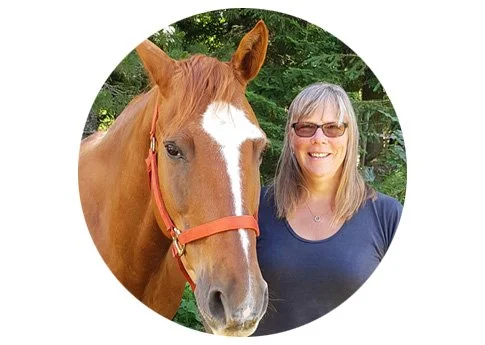Which energy sources are best for your horses?
Please note: Some of the content embedded in this article was provided by Stance Equitec
I recently received an interesting question from someone who was curious about why the NSC designation isn't included on all the supplements/feed in our store. This got me thinking and prompted me to do some research on NSC – Non-Structural Carbohydrates.
I asked the folks at Stance Equitec about NSC levels in their horse supplements, and they assured me that “All of our supplements are low in sugar and starch. We don't add any fillers or sugar/starch-based carriers like many other companies. Even if our supplements were high in NSC (which they AREN’T), the low feeding rate wouldn't impact the overall diet significantly.”
Both structural and non-structural carbohydrates are energy sources for horses. Structural carbohydrates provide sustained energy as they are digested slowly, whereas non-structural carbohydrates are digested rapidly, releasing energy quickly for a short burst of energy.
FIBRE FIRST
Every horse’s diet should be built on a foundation of roughage! Horses need a minimum of 1.5-2% of their body weight in roughage every day. Long stem roughage is best as it provides cellulose and hemicellulose, which fuel the good bacteria in the microbiome of the hind gut. For horses that don't have access to abundant high-quality pasture 24 hours a day, grass hay supplementation is necessary.
It's important to understand that high NSC can have serious negative impacts on some horses, including those with insulin sensitivity, insulin resistance, and Cushing's disease. NSC's negative impact on these horses is demonstrated by post-feeding blood insulin concentrations. Recent research has shown that prolonged hyperinsulinemia was enough to precipitate laminitis in otherwise healthy horses.
Feeds that contain low amounts of NSC should be preferentially selected for metabolically sensitive horses, but selecting a suitable low NSC feed can be difficult since NSC is not currently a labeling requirement!
ENERGY FROM OILS — NOT GRAINS
Horses that require more energy than can be provided by pasture alone have historically been supplemented with grain-based "hard feeds." However, we now know that grain-based feeding is not the healthiest option because grains contain high amounts of starch and sugar, which are NSC! A diet high in NSC has been linked to digestive upsets, stomach and hindgut ulcers, poor behaviour, and poor performance. Oils (fat-based energy) can easily meet the energy requirements of performance and pleasure horses, even during sustained or intense work.(pull out/highlight) Feeding a grain-free, high-fibre diet supports good hind gut health by promoting the development of a healthy microbiome, which in turn supports good behaviour and performance.
Just like in humans, a good immune system begins in the gut!
Fat-based energy uses an alternative metabolic pathway in the horse when compared to grain-based energy, and this pathway is associated with reduced lactic acid production during exercise, resulting in improved muscle recovery post-activity. Oils vary considerably in the way they are metabolized. Most vegetable oils are polyunsaturated, slowly absorbed, and prone to rancidity. By comparison, tropical oils such as coconut oil contain unique medium-chain fatty acids (MCFA) that are readily absorbed and digested. These oils are saturated, not prone to rancidity, very palatable, and can promote gut health.
Until next time,
Leah Hope
More Reading & Resources:
Do your horse a favour… do some reading about NSC in grass, forage and feed from these highly educated women!
https://gettyequinenutrition.com/pages/nsc-and-acth-double-trouble-in-the-fall






